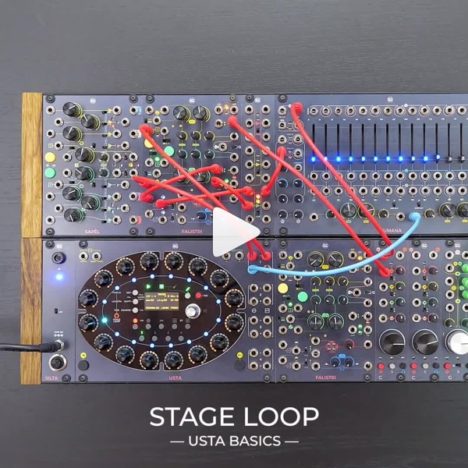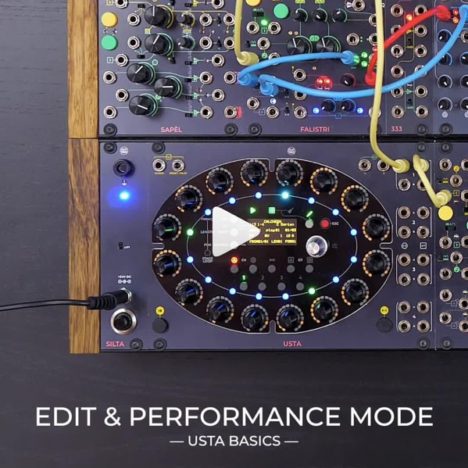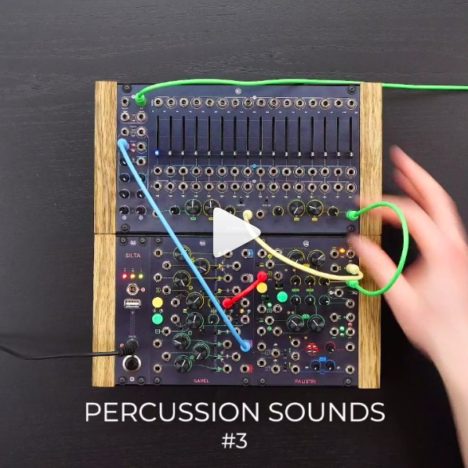- EURORACK
- CUNSA – Sound Seasoning
- CGM – Creative Mixer Series
- BRENSO – Entangled Sound Sources
- USTA – The Voltage Score
- FALISTRI – Movement Manager
- SAPÈL – Tamed Random Source
- FUMANA – Dual 16 Bands Spectral Editor
- 321 – Scale + Flip + Shift + Combine
- 333 – ProAudio Sum & Distribution
- SILTA 2016 – discontinued
- SEI – trunk lines – discontinued
- UNO – foldable case
- PLUS – modular modular case
- ACCESSORIES
- KNOBS
- 500 SERIES
- RESOURCES
- RESELLERS
- ABOUT
- ACCOUNT
Tag / FUMANA
-
Sidechain #1
In this patch, we’ll use the yellow envelope to control the decay of our kick drum. By inverting the envelope and adding an offset (with the 321), you can use it to sidechain other sounds (such as the bass, or the reverb). But what if you want to control the response time of the sidechain control? Correct, the slew limiter output!
2020-02-28 -
Stage Loop
Stage Loop is a special feature that allows you to repeat a specific section of your sequence. You can define the first stage of this section, the length (up to 16 stages) and the number of repetitions. Whenever the playhead crosses the Stage Loop section, it will start looping, then it will move on to the rest of the sequence! You can activate this function anytime by pushing twice the button.
2020-02-11 -
-
Composition Mode
When USTA is not playing (and you are not in any of the menus), just push twice the track buttons: all the gate channels will immediately get high, and you will be able to hear the individual stages one by one. Use the navigation encoder to skim through the sequence, check if everything is all right, and carefully edit every parameter – you can take all the time you need!
2019-11-20 -
‘Set All’ and ‘Shift All’
USTA has two buttons whose primary function is to perform global tasks: ‘Set All’ applies the selected value to all the following stages, while ‘Shift All’ applies the same offset. They can be used to change colors, too!
2019-11-20 -
Pattern Loop
Virtuous cycle or vicious cycle? In Pattern Mode, it’s up to you! Each track of the USTA sequencer has 32 patterns of 16 steps each. By editing the First and Last pattern, you can choose the ends of your pattern loop, on the fly!
2019-11-20 -
Raw CV
In this patch, we demonstrate how CVB can add expressiveness and dynamics to a series of musical events by controlling the scan position of the FUMANA.
2019-11-20 -
Edit & Performance Mode
Composing and performing are closer than they seem – both in life and in USTA!
2019-11-06 -
FUMANA Feedback #3
What about a FUMANA Feedback AND a spectral transfer – at the same time? In this patch, we’ll use the feedback trick to emphasize the modulation of an oscillator over a pink noise. It works great when vocoding, too!
2019-09-03 -
Percussion Sounds #3
Parametric scanning for creative percussion sounds. In this patch we’ll take advantage of two separate envelope outputs of the same FALISTRI channel to shape a pink noise into some percussive sounds. The key element here is the Parametric Scanning function available in the lower section of the FUMANA filter bank!
2019-07-22
Categories
Recent Posts
- CUNSA v/s FUMANA: The same patch on two different filters!
- Subharmonic formant arpeggios patch breakdown: a classic Falistri patch!
- Memes aside, let’s make Sandstorm by Darude on our Frap Tools system
- Four tips to use CUNSA as a sound source (including ringing and additive synthesis)
- ‘Glass sounds‘ analog through-zero FM patch breakdown with Brenso and Cunsa!









